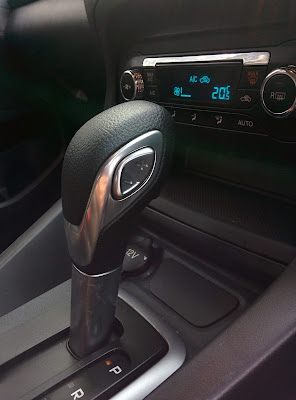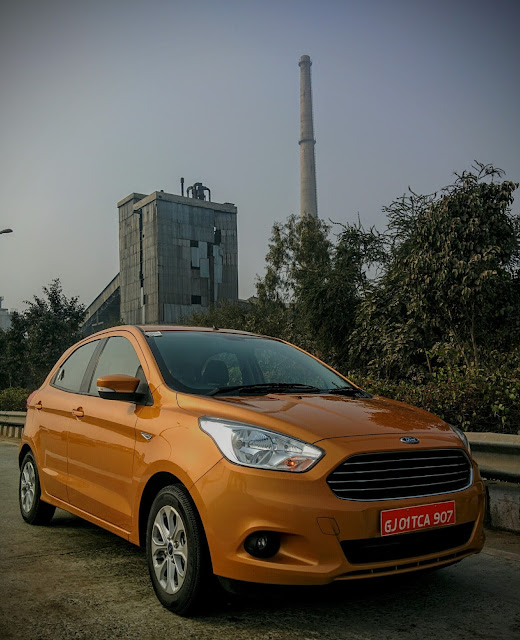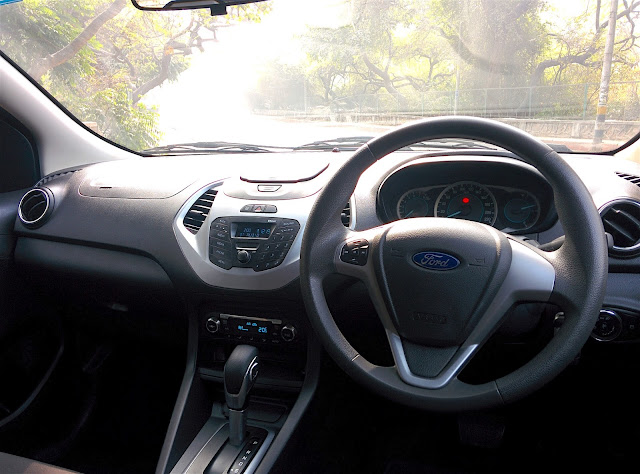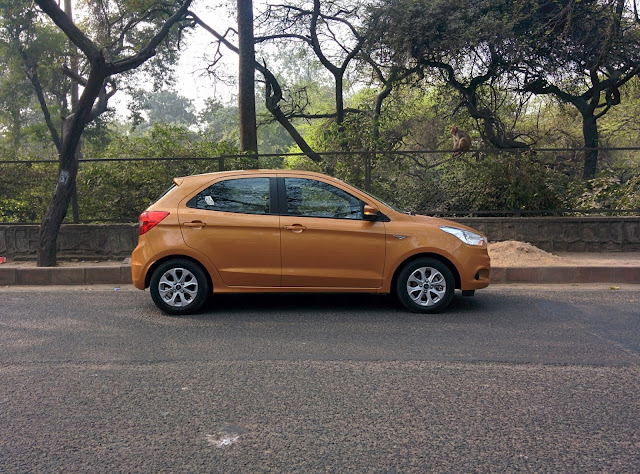The powerful hatch with performance to match: The Ford Figo Drive Review
We had the second generation Ford Figo with us for a couple of weeks recently. Launched sometime around the end of September 2015 in India, this is undoubtedly one of the sweetest small cars we have driven lately. We tested the 1.5L Ti-VCT Petrol AT first and followed it up with the 1.5L TDCi Diesel MT, and both were equally delightful.
Built on a completely new platform, the Ford Figo is well styled, powerful to drive and provides class leading safety features. It packs in most of the creature comforts you would care for and is extremely well priced too. In short, it just shows how a small car is packaged for an emerging market, where more than half the cars on the road are hatchbacks.
While most hatchbacks stand compromised on their form, in a bid to pack in functionality, the Figo has other plans. Its exterior styling has a matured flair that treads the fine line between understated and over the top, making it stand apart from the rest of the dinky cars in the segment. The large Aston Martin like trapezoidal grille gives it an imposing front fascia, and the horizontal chrome slats, bulging bonnet, pulled back headlamps and dual tone ORVMs guarantee the car a second glance. It has a prominent shoulder line running across the side, which gives it a bit of muscle, and the contoured back with wrap around lights is quite impressive as well. Front to back, the Figo is extremely well proportioned and is undoubtedly one of the better designed hatchbacks. The build quality feels rather solid as well. The only niggle being the clumsy ‘thud’ when the doors close, which is far from perfect. May not matter to many, but the soft reassuring closure of some of the European cars have made us a bit more demanding on that front.
The sporty all black interiors of the Figo feel much like the Aspire, with the familiar contoured dashboard and three spoke steering wheel with matte silver accents. The air conditioning vents on either side of the central infotainment console seamlessly integrate with the unit, and the climate control sits right below.
The diesel variant has a small 4.2″ screen and features SYNC with Applink which connects with your smartphone and allows you to effortlessly stream music, make and receive hands-free calls or call contacts by simply speaking their names. Syncing with the phone is a breeze and once done, it is all very efficient. The petrol version doesn’t have a display screen but has the MyFord Dock instead, where you can connect and mount your smartphone, integrate it with the vehicle’s infotainment console and use it as a display.
We are not huge fans of the Ford dashboard though. Because in an era of smart devices, the single colour display panel looks terribly dated. The number pad is very confusing and distracting with a cluttered set of buttons, and the hard plastic looks a bit compromised. While the multifunction steering wheel in the diesel version has both audio and phone controls, the petrol version only has audio controls. The phone controls are on the dashboard panel. Another minor oddity was the volume control knob in the petrol version, which was finished in all black, while the two climate control knobs are rather beautifully finished in chrome. Wouldn’t cost much to put a chrome casing around the volume knob too. The diesel version on the other hand has all of them finished in chrome, which looks much more pleasing.
The climate control chills fast and the sound quality from the audio speakers while streaming Apple Music was quite impressive. Random disturbances do crop up while connecting phone calls for the first time, but they even out later.
The Figo has the most spacious cabin in the segment. Seats are comfortable and there is good knee support and headroom for passengers at the rear. The driving position is excellent, with a wide and commanding view all around. There is ample storage space in the front, but the rear feels a bit naked without any storage, armrest or grab handles. So if you are behind the wheel, do spare a thought for your fellow passengers. They have nothing but dear life to hold on to.
Another notable miss is a roof lamp at the centre. While we understand the need to keep the roof clear to pack in 6 airbags in the top variant, there should be an alternate provision to light up the rear. It is impossible to locate anything in the dark, and fumbling around with the mobile phone flashlight is not cool.
Having said that, nothing comes close to the Figo in terms of safety. While the top variant has 6 airbags, the base model comes with driver airbag as standard, and from the second variant onwards there are dual airbags. Other safety features include ABS with electronic brake force distribution, electronic stability program, hill-assist and traction control system. Ford also has an Emergency Assist system, which uses a synced mobile phone to call emergency responders and provide information about the vehicle and its location. The Ford MyKey is another impressive feature, which lets the owner program the car’s key to alter things like seatbelt use, speed limits and audio volume.
 A few things that we missed in the Figo are keyless entry, engine start/stop, auto headlamps, rear camera and parking sensors, which are usually expected in top trims. They would have made things a bit sweeter, but also pushed up the price a bit perhaps, taking away the competitive edge it currently has.
A few things that we missed in the Figo are keyless entry, engine start/stop, auto headlamps, rear camera and parking sensors, which are usually expected in top trims. They would have made things a bit sweeter, but also pushed up the price a bit perhaps, taking away the competitive edge it currently has.
In terms of driving dynamics, the 1.5L TDCi Diesel MT definitely scores over the 1.5L Ti-VCT Petrol AT. It’s a noisy diesel, but with 100bhp @3750 rpm, it is ahead of the pack within its segment. Extremely quick off the block with absolutely no lag whatsoever, it is a delight to drive. It lurches ahead as you step on the pedal and has a raw untamed character that needs to be kept on leash. The throttle response is just brilliant.
It is quick when straight, handles corners with flair and makes those overtaking moments and split second manoeuvres delightful. There is ample power in the low revving band and with class leading 215Nm torque @1750-3000 rpm, you wouldn’t need to worry about shifting gears frequently while driving in congested city roads. High speed stability is very impressive and the vehicle felt steady and secure even at speeds over 100 km/h. The engine noise does creep inside the cabin at high speeds and the lack of a dead pedal is a bit bewildering. It’s a very basic feature that ensures driver comfort during long journeys, and we haven’t figured the advantage of not having one.
 We returned a mileage of 16.5 km/l on the 1.5L TDCi Diesel MT after roughing it up on the road. And that was pretty impressive. Although it has a ARAI-certified fuel consumption of 25.83 km/l, we reckon good behaviour would be rewarded with even better mileage.
We returned a mileage of 16.5 km/l on the 1.5L TDCi Diesel MT after roughing it up on the road. And that was pretty impressive. Although it has a ARAI-certified fuel consumption of 25.83 km/l, we reckon good behaviour would be rewarded with even better mileage.
If your drive is confined to daily commutes within city limits, the 1.5L Ti-VCT petrol AT is the one you should consider. With a dual-clutch six speed automatic gearbox it is the most convenient urban drive about. Easy to handle, manoeuvre and squeeze through congested lanes, it offers a decent ride quality and absorbs bumps and potholes with ease. The transmission comes with a Sports mode and there is an option of switching to manual mode at the flick of a ‘+/-‘ button on the gear knob. With 112bhp @6300rpm and 136Nm @4250rpm torque, the specs are quite impressive. But the drive unfortunately lacks the bite. It is not as punchy as the diesel, and it performs well only in the high revving band. In the lower and mid range it feels a bit under powered. Rapid acceleration leads to jerky downshifts and loss of power for a fraction of a second, before picking up. When acceleration is gradual, the gear shifts are smoother. But when you are mentally in a Need for Speed mode, you may feel severely challenged with the performance. Switching to Sports mode is like being on mild steroids, with high revving, delayed gear shifts. However, it seemed too programmed for effect, rather than making any real difference to the drive experience or giving an extra dose of adrenalin rush behind the wheels.
 The 1.5L Ti-VCT petrol AT is likely to be a preference with city slickers, youngsters and women for its somewhat sophisticated on-road behaviour. In stop & go city traffic and congested by-lanes, you couldn’t ask for an easier and better drive.
The 1.5L Ti-VCT petrol AT is likely to be a preference with city slickers, youngsters and women for its somewhat sophisticated on-road behaviour. In stop & go city traffic and congested by-lanes, you couldn’t ask for an easier and better drive.
We spent more time with the 1.5L Ti-VCT petrol AT, and after driving more than 600 kms. returned a mileage of 12.5 km/l. This figure, as against a certified range of 17 km/l could be the only deterrent that drives fence sitters away in a fiercely value seeking segment. Otherwise, this is an excellent package for its price. The base Figo petrol version starts at INR 4.29 lacs, and our test drive variant, the 1.5 Ti-VCT petrol AT comes for INR 6.91 lacs.
For the motor enthusiast who care for a bit of excitement behind the wheel, the 1.5L TDCi Diesel MT comes for INR 7.40 lacs. The base diesel however, starts at INR 5.29 lacs. All prices are ex-showroom Delhi.
The Figo is a powerful performance hatch that takes itself quite seriously, combining high safety features in a stylish package. It is a perfect first car for a young professional, or a utility second car to have in the garage of an average urban family of four, who have multiple errands to run through the day. Either way, it is a car that will be universally loved, as it is hard to find flaws in this near perfect hatch package. Take a test drive, and you would know what we mean.









